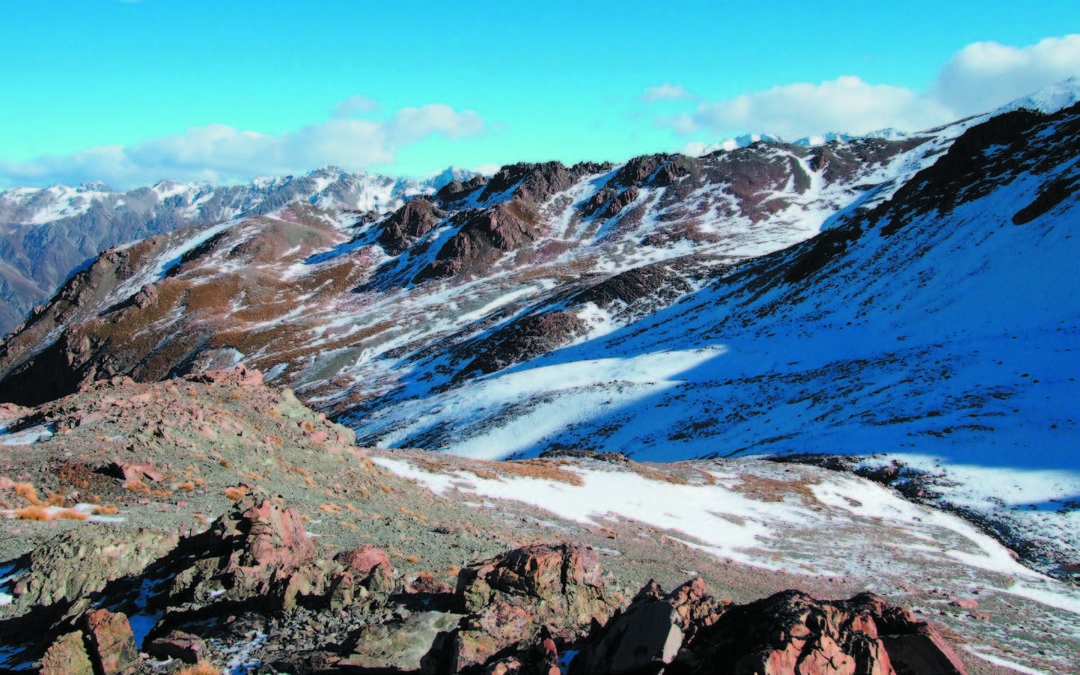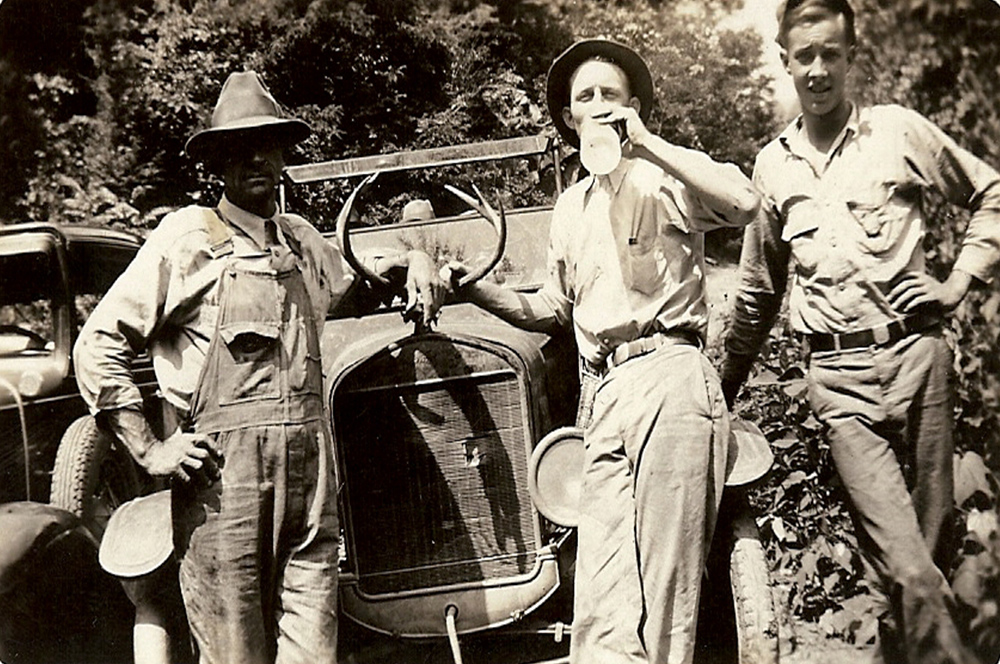There is another “land down under.” Not the one you’re thinking of. It is, by any measure, far, far away from anywhere that you might be. It is a land of towering white-capped peaks and green alpine pastures, lush rainforest and craggy coastlines that seem to stretch forever. There is beauty enough to break the hardest heart. It happened to me the first time that I saw the black sand beaches of the west coast that stretched farther than the my eyes could see—pristine, unspoiled by the harsh hand of man, dotted with rock outcroppings where the feet of the Southern Alps dip their toes into the roiling surf inbound from the Tasman Sea. Unlike the harshness of Australia, the whole country is drenched in a glorious, beautiful fecundity that welcomes all.
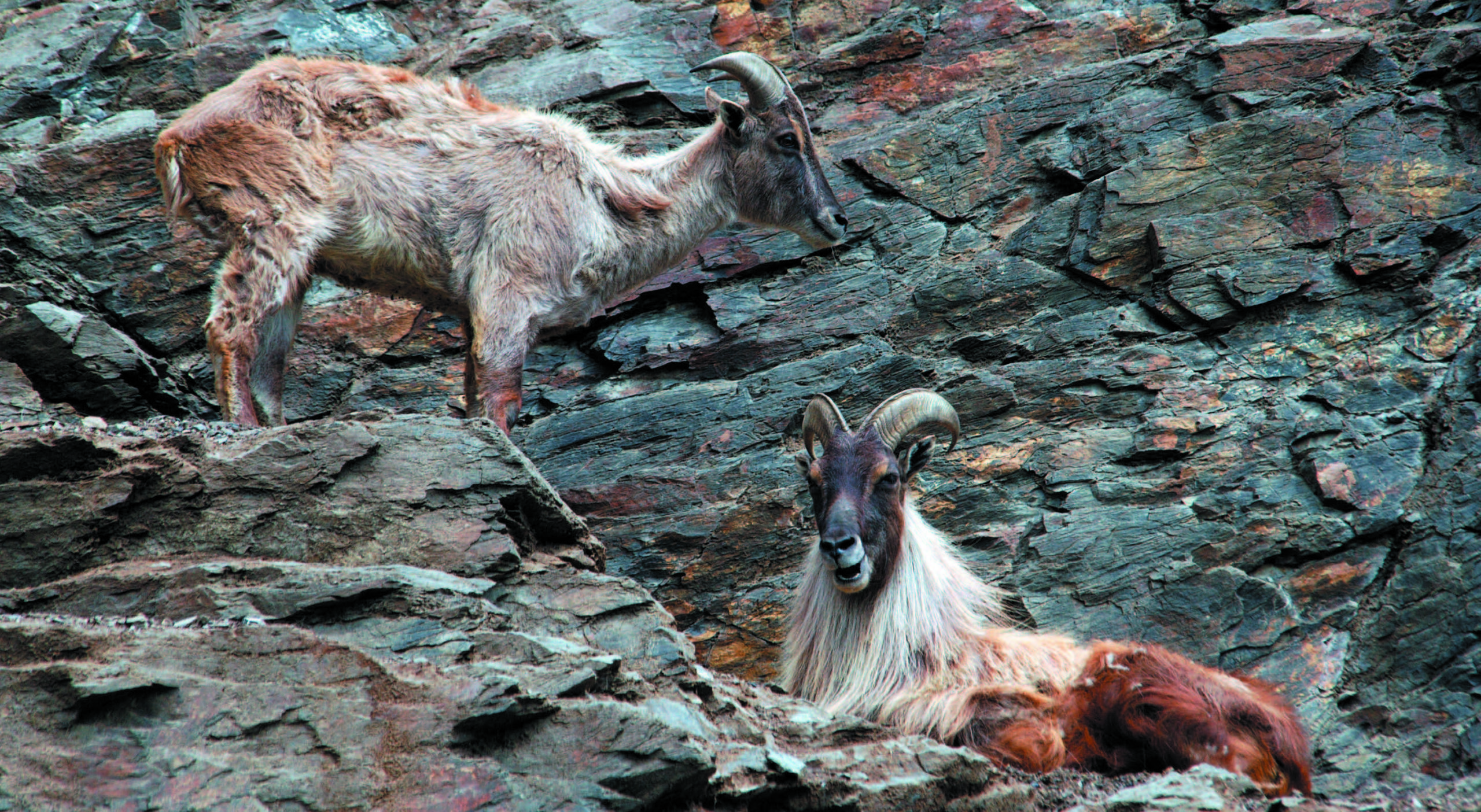
A native of the Himalayas, tahr were introduced in New Zealand in 1904. Today, they frequent the steepest and most rugged terrain throughout the Southern Alps.
And I have, on more than one occasion, been seduced by the laid-back, natural kindness of the rural people who inhabit the collection of islands. They are friendly, generous to a fault, sometimes raucous and possess an endless inventiveness that is fostered by the necessity of their very isolation.
The people were actually the reason that I first went there many years ago. New friends led to visits. Visits brought an acute awareness of what the country offered. In time, I came to love the place.
Of course, I’m talking about New Zealand. And there is no place on the planet where I’d rather be. I went there again last May to visit old friends, to see what was going on and for a little hunting. Hunting and fishing are always a part of the equation for me.
There are few places in the world that offer such a variety of opportunities, and I’m not about to turn any of them down. This time, I was tempted by an invitation from my long-time friend, Steve McGuire, CEO of Southfort Labs in Cambridge.
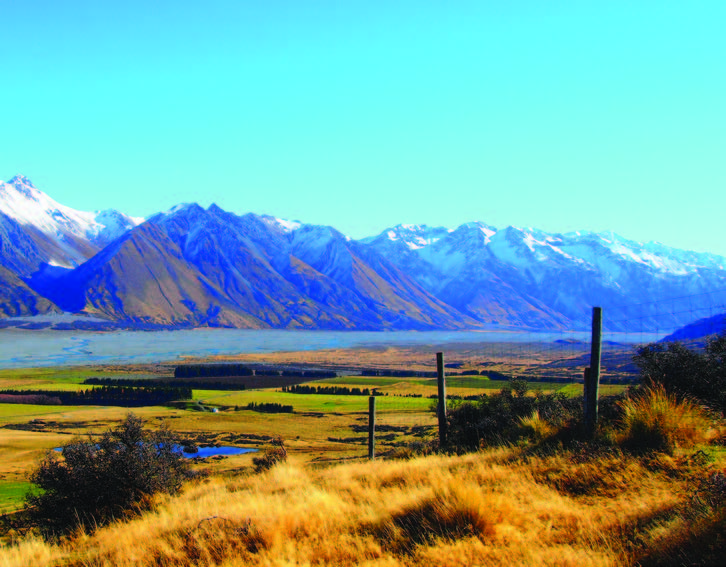
Steve’s company makes high-precision, carbon-fiber-wrapped gun barrels and superlight carbon-fiber gunstocks that are sold all over the world. If you have sampled the unbelievable long-range hunting rifles produced by The Best of the West in Wyoming, chances are that you have used some products from Southfort Labs. I’m not much of a long-range shooter, but Steve kept promising to show me how, using products from The Best of the West. He also had some surprises for me.
The biggest surprise involved the Harre Rifle. Southfort had acquired the rights to produce the Harre 49 from Brian Harre. Brian was an associate of Don Allen at the time he was developing the spectacular Dakota 76 rifle. Brian describes the Harre 49 as an evolution of that rifle.
The expressed goal of the collaboration between Brian and Southfort is to build “the finest bolt-action hunting rifle in the world.” I’ve seen some of their prototypes and would have to believe they damn well may achieve it. The rifle comes in take-down and conventional forms, and I have one of the take-downs in a two-caliber set on the way to me in preparation for a couple of months in Mozambique.
At this writing, I also have one of the ultra-precision, long-range rifles from The Best of the West. The stock and barrel incorporate patented and proprietary processes that allow the master rifle-builders from Wyoming to construct rifles that will accurately reach out 1,000 yards and more, and yet are light enough for an old man like me to carry around the mountains all day. My .300 WSM barely breaks seven pounds—scope, sling and all. It’s quite a feat of gunmaking, and I wouldn’t have believed it possible until I saw it with my own eyes.
My introduction to their products began with a long-barreled BOTW rifle in .28 Nosler. The guys at Southfort refer to it as “The Big Gun”—not for its size or weight, mind you, but in reverence for what it will do. I knew right away that we were on to something truly special.
As soon as we got the Huskemaw scope from BOTW sorted out and mounted, we moved to the range. Personally, I consider 200 yards to be “long range,” but Steve set out our first target there. In just a minute, he had bullets impacting within a couple of inches of the aiming point, and invited me to have a go at it. I got a quick education about precision rifles when my first three-round group would have disappeared beneath a dime!
My education continued the next day at Mungunui Lodge. Mat Hall’s place is high in the mountains of the North Island, a couple of hundred clicks from Steve’s shop. Our game plan was to fly to the South Island for a tahr hunt, but Steve had a couple of days of work before we could cut loose. Poor me, I got the assignment to go over to Mat’s place and collect a small fallow hind for meat. Steve, it seems, has a special fondness for sausage made from the meat of a fallow hind. My orders were, “Head or neck shot only! We don’t need any blood-shot meat in the sausage.”
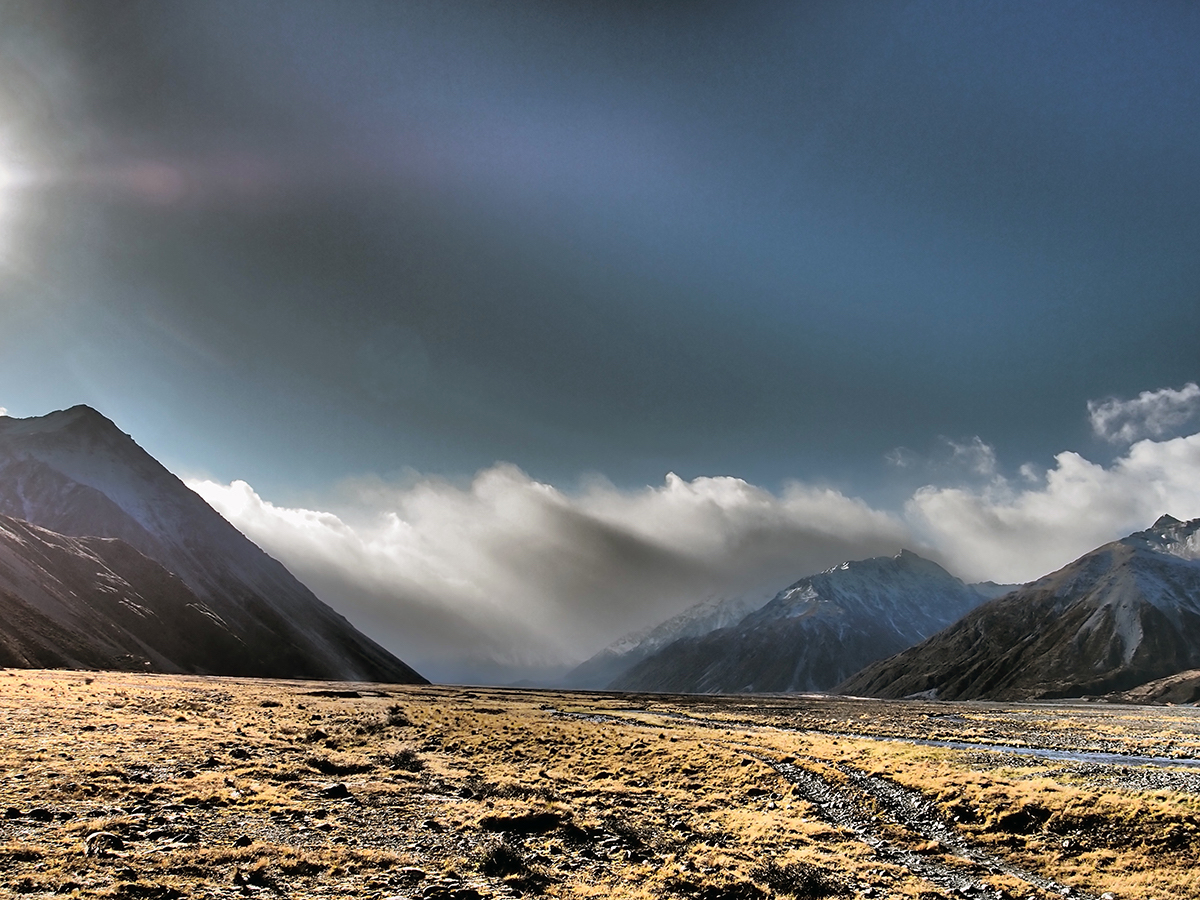
Got it!
Before dawn the next day, Southfort’s stock finisher, Kevin Small, and I headed out for my next lesson. Mat was waiting for us at his lodge, which sits atop a small mountain and surveys miles of brilliant, emerald-green ridgetops, brushy valleys and, in the far distance, a blue-green sliver of the Tasman Sea. From his deck, we glassed fallow deer, goats, wild boar and several magnificent red stag feeding on the distant ridges in the thin morning light.
The day was perfect for hunting—clear, crisp, and with virtually no wind. Kevin, Mat and I left the lodge and eased down a long grassy ridge that rambled for a half-mile before it split into a series of finger ridges separated by deep draws filled with stunted trees and scrub. For a couple of hours, we saw game constantly on the distant ridges, but nothing that met our criteria. In the process, I stalked an incredible red stag just for fun. He had huge, thick, long beams with so many points that I couldn’t count them all.
A half-hour later, we were following a tiny ridgeline path that wound from one clearing to another, when three fallow hinds saw us first. They wasted no time racing down the ridge, through a brush-choked bottom and up the other side. When they topped out on the grassy bench, they stopped to look back. They clearly were relying on distance rather than cover for their safety. It was a fatal mistake for the smallest of them. They had barely stopped when Mat read the range at “a hair under 300,” and followed with, “let’s take the small one.”
With that, Kevin dropped his daypack at my feet, gesturing for me to lie down and rest the forearm over the pack. All the while, I was mumbling: “But, but, but . . . Steve said only head or neck shots.”
Kevin just smiled and replied, “Piece o’ cake,” as he reached over and made a small adjustment to the scope. “Just hold where you want her to hit.”
And the little hind’s fate was sealed. She was staring straight up the hill at us when the crosshairs settled just beneath her chin. When the “Big Gun” boomed, she simply rolled over the ridge and out of sight. We reached her about an hour later and found that the bullet had taken her just where it was supposed to. We dropped her off at the processors on the way home. Steve had his sausage with no bloodshot meat. And I had a big boost of confidence in the big gun’s capabilities.
Two days later, we packed the big gun and boarded a plane for Christchurch, where we met up with Southfort’s other principal, Pete Kowalski, who had a Hi-lux 4-wheel drive for us. After a two-hour drive, we made it to Lilybank Station, arriving in mid-afternoon on a cloudy, sullen day that threatened to spill rain all over our plans.
Lilybank Station lies to the north and east of Lake Tekapo at the confluence of the Godley and Macaulay rivers. It is a singularly spectacular place, as beautiful as anywhere in the world. The Godley Valley is surrounded by the soaring peaks of the Southern Alps, which rival their northern namesakes in every way.
Blue-green glacial runoff feeds Lake Tekapo through the mile-wide valley, and near-vertical walls rise several thousand feet into the sky. The slopes are grassy in some places, rocky in all places and climb to vast scree fields and snowbanks as they reach higher. And they’re absolutely alive with free-ranging tahr. Still, getting one is not simple or easy, and if you try, you’d best be equipped with a rifle that is capable of reaching way, way out. After all, this is the country that made the Kiwis into a nation of exceptional riflemen.
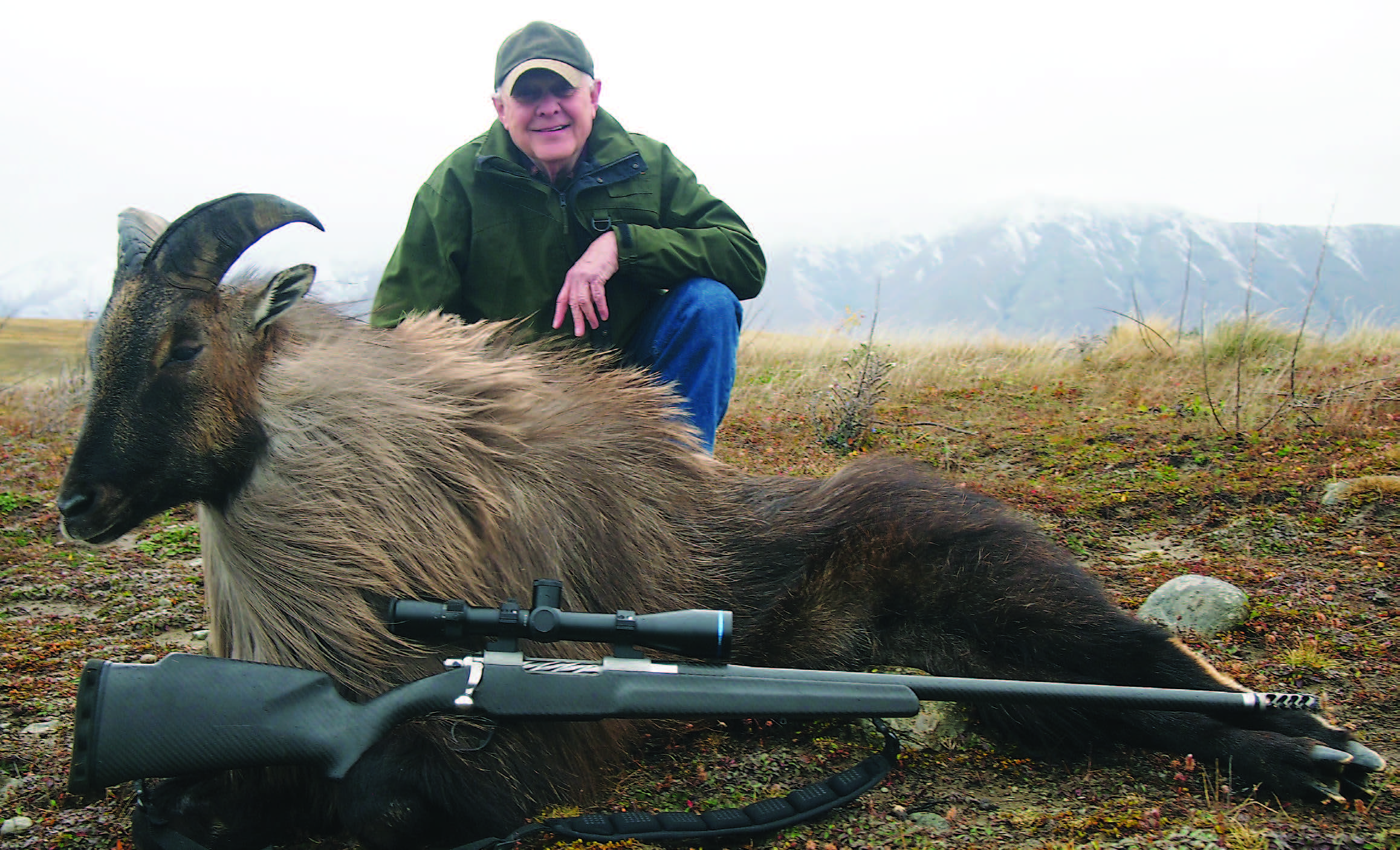
The author killed this magnificent bull tahr at 501 yards using his long-barreled BOTW rifle in .28 Nosler.
The tahr, or Himalayan tahr, as they are sometimes called, can no longer be hunted in their native mountains. In fact, the Southern Alps constitute one of only a handful of places in the world where free-range tahr can be hunted. They were introduced to New Zealand in 1904 and flourished there.
Years ago, Lilybank was the first and finest hunting lodge in New Zealand, with accommodations ranging from backcountry cabins to an ultra-luxurious lodge. Johnny Wheeler is the operations manager who is charged with bringing Lilybank back to its former glory as a hunting destination after many years as a private playground. Johnny is a slender, tough-as-nails guy in the mold of New Zealand’s renowned Sir Edmund Hillary, and he greeted us with a steel-grip handshake and the wide smile for which Kiwis are justly famed.
Steve and Johnny are old friends, and Steve is very familiar with the vast property. Since there were no guests there at the time, due to ongoing renovations to the lodge, we elected to camp far up the river where we could wake up closer to the area that Steve wanted to hunt.
After a short palaver with Johnny, we set up our tent between two small hills on a peninsula that jutted a quarter-mile into the Godley River. Our location gave us a degree of shelter from the wind and, from the door of our tent, we had a jaw-dropping view of the valley and surrounding mountains. Through the spotting scope, we could see the brown and tan spots of tahr feeding across the slopes, thousands of feet above us.
Just getting a shot at a tahr demanded a lot of effort. It took a good half-day of climbing to the snow line where most of the tahr seemed to congregate. With another half-day to get down, it didn’t leave a whole lot of time to hunt. Nevertheless, we made a number of long, hard stalks over the next few days, but to no avail.
Once, we almost got a chance when we rounded a rock wall to see a good bull perched on the side of a cliff around 400 yards out. The bull had other ideas, though. He saw us at the same time, and bounded effortlessly up the steep cliff. We backed out and circled around the top to a snowfield on the other side of a small gap, where we found his tracks in the snow. Unfortunately, he was long gone.
We decided that maybe, just maybe, he hadn’t gone too far and followed his tracks downward until they disappeared into a huge field of scree where we lost him. We had guessed wrong, but the lower edge of the rocky slope led to a whole mountainside of short, ankle-high grass.
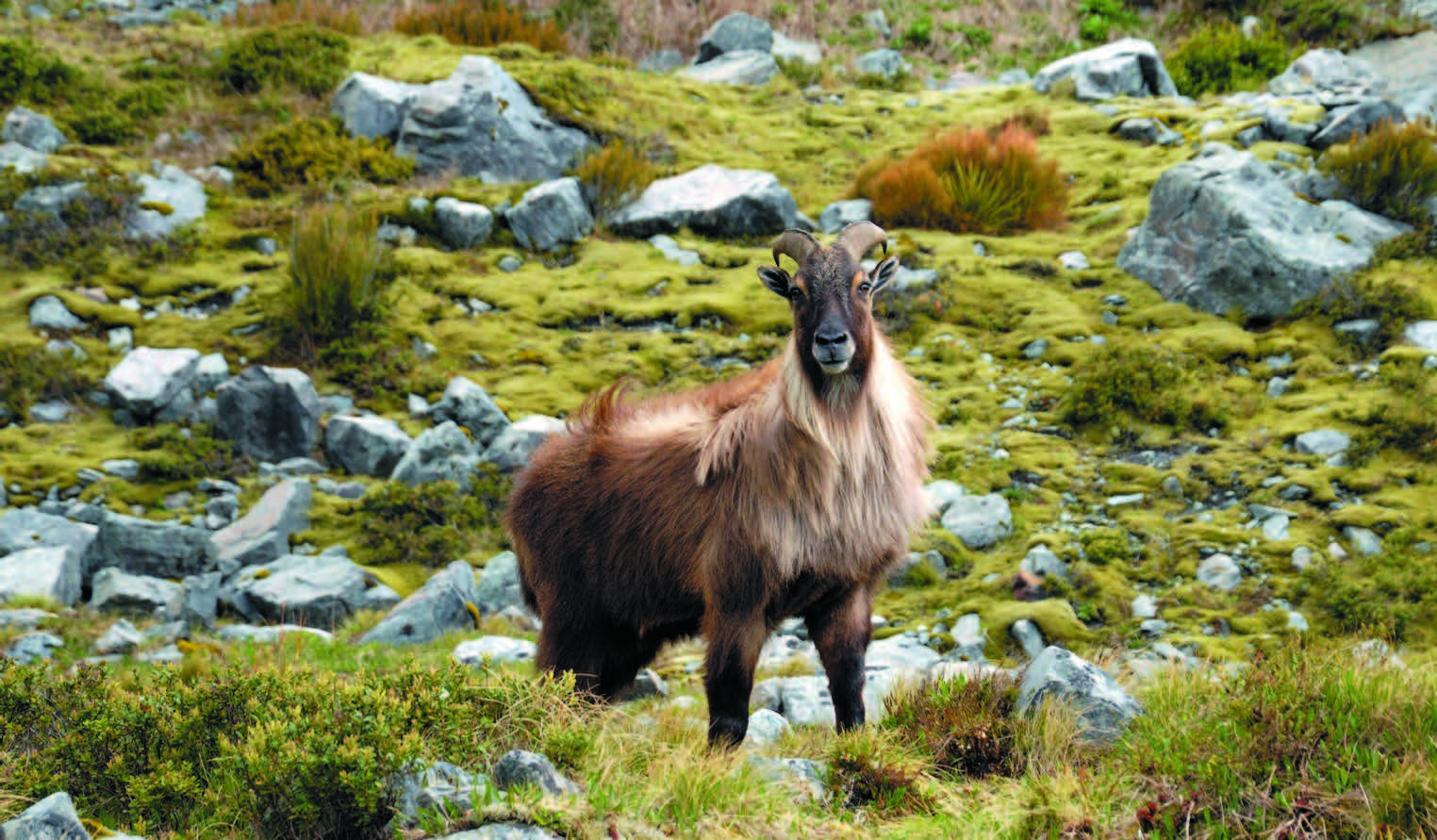
New Zealand’s tahr population numbers about 10,000 animals. Years ago, there were so many tahr that the government tried to reduce their numbers by shooting them from the air.
We were delighted to find that the two- or three-mile expanse of grass had tahr feeding everywhere. Logic said that we should be able to stalk close enough for the big gun to do its work, but logic ain’t always right and twilight found us sitting on the edge of an abyss, looking down at our camp several thousand feet below.
What followed was fairly complicated, to say the least, but the short version has the pair of us arriving at camp around 2 a.m., where we fell into our sleeping bags and woke about 10 o’clock the next morning to the steady drum of rain on our tent. A quick look revealed that the high country was filling with snow and a check of the weather forecast on our portable radio projected that it would last for several days. At that point, discretion dictated a hasty retreat, so we buttoned up our camp and piled into the 4×4.
For a change, the weatherman had been right, and when we returned four days later, we only had one day before we had to catch a plane back to the North Island. The highlands were deep in snow, but we found that the tahr were still feeding below the snow line, which was much lower now. Despite that advantage, it took us until late evening to work our way into the vicinity of a good bull.
Johnny told us that he had glassed a group of tahr feeding just below snowline on the upper end of Station Creek. A couple of hours of climbing left us on a high ridge overlooking a thousand-foot chasm. The opposite ridge, about 500 yards away, was covered in snow with patches of grass and brush showing here and there.
Things were looking pretty dreary as the moon rose over the range behind us and dusk began to settle on Lilybank. With the sky turning purple, darkness was coming on fast when we spotted a lone bull on the far ridge. A dark spot against the white snow, we could see his mane ruffling in the wind. Frankly, the shot seemed much too far; I had never even attempted a one at the distance.
Steve pulled the rangefinder from his pocket and read the number at “501.” I grimaced. Steve grinned and whispered, “It’s doable.“
“Trust me . . . this is what you came here for. The gun can do it if you’re willing to try.”
I still wasn’t sure when I plopped down in the snow. I rested the forearm on my pack, dug the heel of the stock into the snow and took a peek. At that, my mentor reached over and made a small adjustment for range and one for windage, and commanded, “Hold dead on.”
Which I did. At the shot, the bull simply collapsed and slid head-first down the ridge and lay still. Never even kicked!
It took the better part of five hours for us to circumnavigate the chasm, find the bull and muscle him out of that hole. It was quite a feat and quite a revelation to me. It certainly warranted the nip of Glenmorangie that Johnny, Steve and I shared to celebrate when we reached the lodge.
In retrospect, I still have the gut feeling that the shot was too long. Old habits die hard, they say. On the other hand, Stevie was correct—with the right equipment and the right training, it’s possible to reach farther than you think. And I’m still learning.
Maybe you can teach an old dog new tricks, after all!
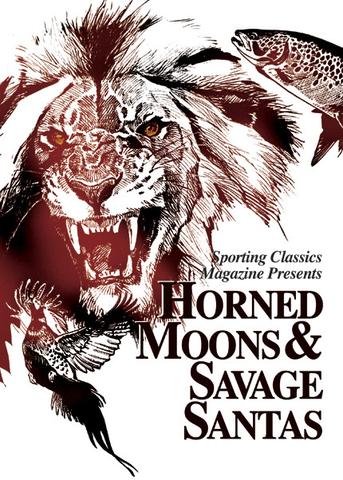
Horned Moons & Savage Santas is a collection of some of the best stories ever written by such re-nowned sporting legends as Ernest Hemingway, Robert Ruark, Gordon MacQuarrie, Howard Walden, Jack O’Connor, Arthur Macdougall, Robert Murphy, and many, many more. With more than fifty superb illustrations, this book is destined to become a classic in its own right. Buy Now

